Non-woven geotextile fabric is a specialized type of textile material designed for use in geotechnical engineering and civil construction applications. Unlike traditional woven fabrics, which are created by interlacing yarns or threads together, non-woven geotextiles are manufactured by bonding or felting synthetic fibers together mechanically, thermally, or chemically. This process results in a fabric with a porous structure and uniform properties throughout, offering several advantages for various engineering applications.
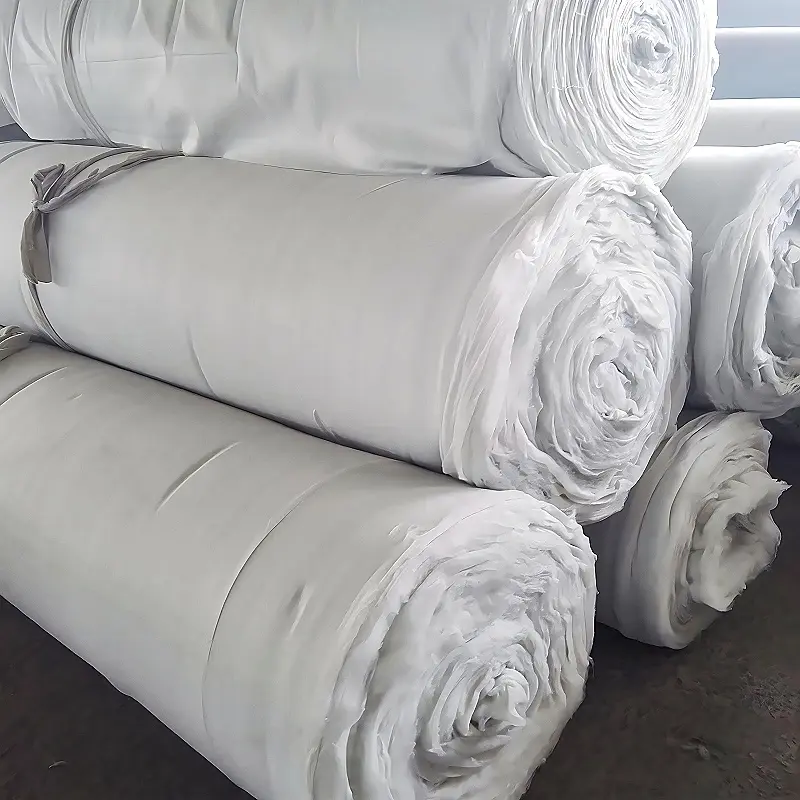
Here are some key characteristics and applications of non-woven geotextile fabric:
Porous Structure: Non-woven geotextiles have an open and porous structure, allowing for the efficient passage of water, gases, and other fluids through the fabric. This permeability is essential for applications such as drainage, filtration, and erosion control.
Strength and Durability: Despite being lightweight, non-woven geotextiles exhibit high tensile strength and tear resistance. This makes them suitable for use in demanding civil engineering projects, where they provide reinforcement, separation, and stabilization of soil or aggregate materials.
Filtration: Non-woven geotextiles act as effective filters, preventing the migration of fine particles while allowing water to pass through. This filtration capability is valuable in applications such as retaining walls, embankments, and landfill liners, where it helps to maintain soil stability and water quality.
Separation: By creating a barrier between different soil layers or aggregates, non-woven geotextiles prevent mixing and intermingling, preserving the integrity and performance of the structure. They are commonly used in road construction, railway ballasts, and landfills to prevent the contamination and degradation of materials.
Erosion Control: Non-woven geotextiles help to control erosion by stabilizing soil surfaces and preventing the loss of soil particles due to water flow, wind, or other environmental factors. They are often used in slope stabilization, shoreline protection, and stormwater management projects.
UV Resistance: Many non-woven geotextiles are treated with UV stabilizers to enhance their resistance to degradation from sunlight exposure. This ensures the long-term performance and durability of the fabric, even in outdoor applications.
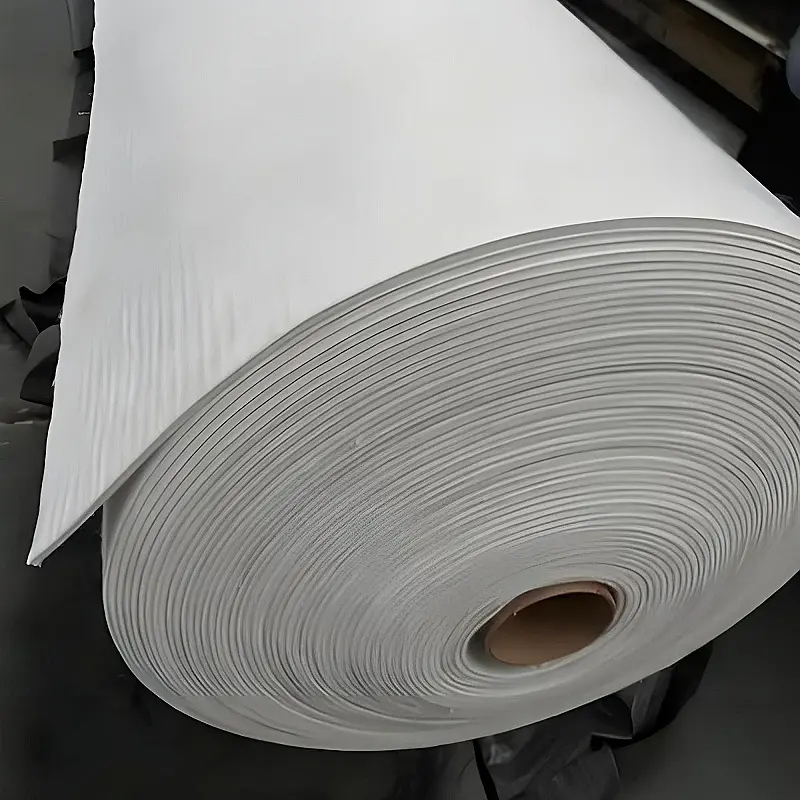
Non woven geotextile fabric vs woven
Non-woven geotextile fabric and woven geotextile fabric are two distinct types of materials used in geotechnical engineering and civil construction projects. While both serve similar purposes, they have differences in their structure, manufacturing process, and performance characteristics.
Non-Woven Geotextile Fabric
Structure: Non-woven geotextiles are made by mechanically, thermally, or chemically bonding synthetic fibers together. This results in a fabric with a random arrangement of fibers, creating a porous and uniform structure.
Manufacturing Process: The manufacturing process of non-woven geotextiles involves entangling or felting synthetic fibers to form a cohesive fabric. This process does not involve weaving or knitting.
Characteristics:
Porous structure allows for efficient water flow and filtration.
High tensile strength and tear resistance.
Excellent puncture resistance.
Permeability to water and gases.
UV resistance can vary based on the type of synthetic fibers used.
Applications: Non-woven geotextiles are commonly used for filtration, drainage, separation, erosion control, and reinforcement in civil engineering projects such as road construction, retaining walls, landfill liners, and slope stabilization.
Woven Geotextile Fabric
Structure: Woven geotextiles are manufactured by interlacing synthetic yarns or tapes together in a regular pattern, similar to traditional woven fabrics.
Manufacturing Process: Woven geotextiles are produced using weaving techniques, where warp and weft yarns are interlaced to form a stable fabric structure.
Characteristics:
Regular and uniform weave pattern.
High tensile strength in both directions (warp and weft).
Limited elongation under stress.
Less permeable compared to non-woven geotextiles.
Moderate to low puncture resistance.
Applications: Woven geotextiles are typically used for applications where high strength, stability, and filtration are required. Common applications include soil stabilization, reinforcement of embankments, separation of soil layers, and erosion control in hydraulic structures.
Comparison
Strength and Stability: Woven geotextiles generally offer higher tensile strength and stability compared to non-woven geotextiles due to their regular weave pattern.
Permeability: Non-woven geotextiles typically have higher permeability and better filtration properties than woven geotextiles.
Cost: Non-woven geotextiles are often more cost-effective than woven geotextiles, making them suitable for applications where filtration and drainage are primary considerations.
The choice between non-woven and woven geotextiles depends on the specific requirements of the project, including strength, permeability, filtration, and cost considerations. Both types of geotextiles offer valuable solutions for a wide range of geotechnical challenges in civil engineering and construction.
How to produce non woven geotextile fabric?
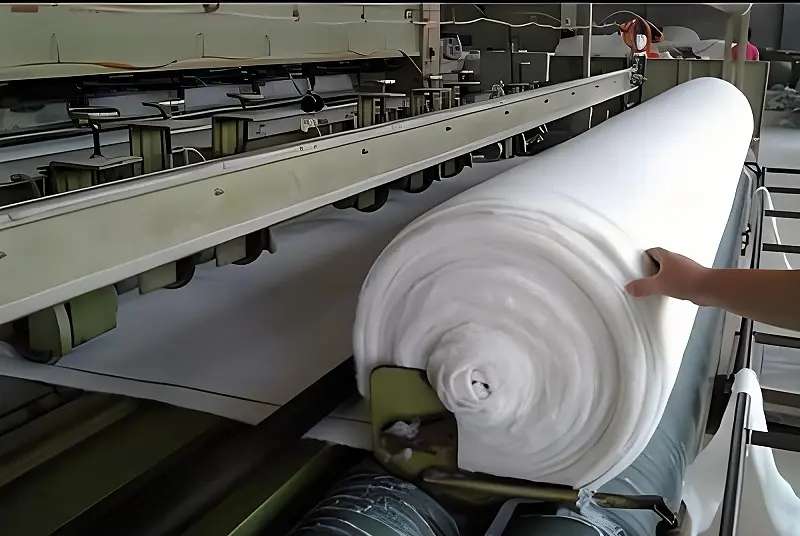
The production process of non-woven geotextile fabric involves several steps, including fiber selection, web formation, bonding, finishing, and quality control. Here's an overview of the typical manufacturing process:
Fiber Selection: The process begins with selecting suitable synthetic fibers for the desired application. Common fibers used in non-woven geotextile production include polypropylene (PP), polyester (PET), and polyethylene (PE). These fibers are chosen for their strength, durability, and chemical resistance.
Web Formation: The selected fibers are fed into a carding machine, which aligns and lays them out in a uniform web or mat. This web serves as the foundation for the non-woven fabric. The web formation process may involve blending different types of fibers to achieve specific performance characteristics.
Bonding: Once the web is formed, the fibers are bonded together to create a cohesive fabric. There are three main methods of bonding used in non-woven geotextile production:
Mechanical Bonding: In this method, the fibers are entangled or needled together using mechanical needles or barbs. This process creates a strong bond between the fibers without the need for adhesives.
Thermal Bonding: Thermal bonding involves applying heat and pressure to the fiber web, causing the fibers to melt and fuse together at their contact points. This process creates a bond that is resistant to mechanical stress and stretching.
Chemical Bonding: Chemical bonding utilizes adhesives or binders to bond the fibers together. The adhesive is applied to the fiber web, which is then cured to create a durable bond. Chemical bonding can enhance fabric strength and stability but may require additional processing steps to remove excess binder.
Finishing: After bonding, the non-woven fabric may undergo additional finishing processes to improve its properties or enhance its performance for specific applications. These processes may include:
Calendering: The fabric is passed through heated rollers to smooth its surface and improve its texture.
Coating: A protective coating may be applied to the fabric to enhance its resistance to UV radiation, chemicals, or abrasion.
Dyeing: Non-woven fabrics can be dyed to achieve desired colors or aesthetics.
Testing and Quality Control: Throughout the production process, the fabric undergoes rigorous testing to ensure it meets specified standards for strength, permeability, durability, and other performance criteria.
Rolling and Packaging: Once the non-woven geotextile fabric is manufactured and inspected, it is rolled onto large spools or cut into smaller rolls for packaging and distribution to customers.
By following these steps, manufacturers produce high-quality non-woven geotextile fabrics that meet the diverse needs of civil engineering and construction projects.
What are the application scenarios of non woven geotextile fabric?
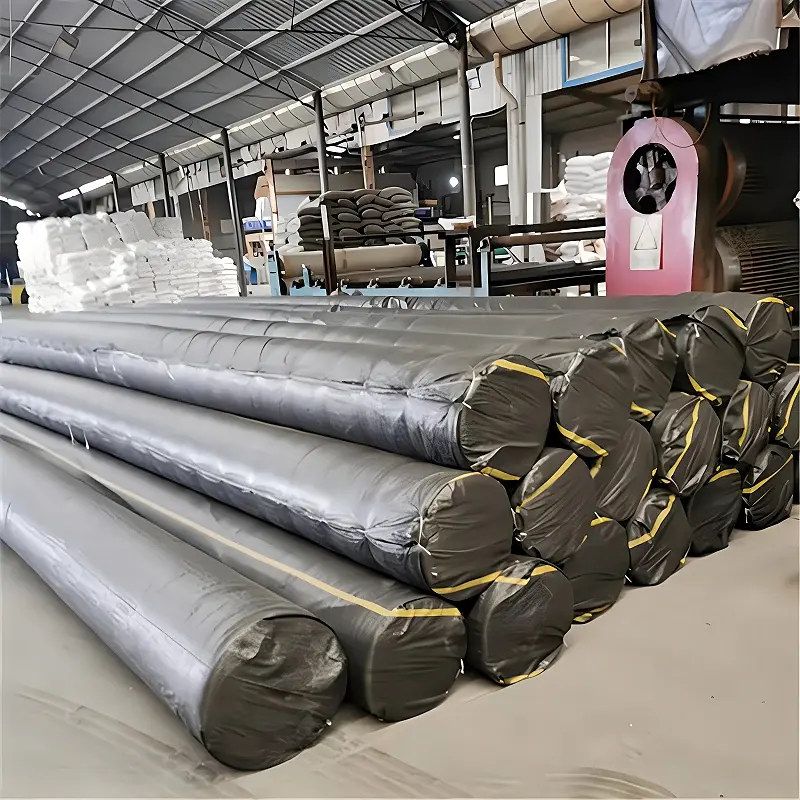
Non-woven geotextile fabric finds numerous applications across various civil engineering and construction projects due to its versatile properties and durability. Some common application scenarios include:
Drainage Systems: Non-woven geotextiles are used in drainage systems to facilitate water flow while preventing the migration of soil particles. They are placed beneath roads, embankments, and retaining walls to provide filtration and separation between soil layers and drainage materials.
Road Construction: In road construction, non-woven geotextiles are employed for subgrade stabilization, separation between different layers of pavement materials, and erosion control along road shoulders and embankments. They help improve the structural integrity and longevity of roads by preventing the mixing of soil layers and enhancing drainage.
Landfills: Non-woven geotextiles serve as essential components in landfill liner systems to contain and manage waste materials. They are used as part of composite liners or as standalone barriers to prevent leachate migration into the surrounding soil and groundwater, thereby protecting the environment from contamination.
Erosion Control: Non-woven geotextiles are utilized in erosion control measures such as slope stabilization, shoreline protection, and vegetative support. They help prevent soil erosion by stabilizing slopes, reinforcing vegetation, and protecting against water runoff and wave action.
Retaining Walls: Non-woven geotextiles are incorporated into retaining wall structures to provide reinforcement and filtration. They help distribute soil loads, reduce soil settlement, and prevent the loss of fine particles while allowing for efficient drainage behind the wall.
Railway and Airport Construction: Non-woven geotextiles are used in railway and airport construction projects for subgrade stabilization, erosion control, and separation of ballast materials. They help improve the stability and performance of railway tracks and airport runways by providing support and drainage.
Soil Reinforcement: Non-woven geotextiles can be used to reinforce soil structures such as steep slopes, embankments, and earth retaining structures. They help increase soil stability, prevent erosion, and enhance load-bearing capacity by distributing stresses and reinforcing weak soil layers.
Vegetated Wall Systems: In green infrastructure projects, non-woven geotextiles are employed in vegetated wall systems to support plant growth, promote root development, and stabilize soil. They create a stable substrate for vegetation while allowing for water and air exchange.
These are just a few examples of the many applications of non-woven geotextile fabric in civil engineering, construction, and environmental protection projects. Its versatility, strength, and permeability make it an indispensable material for addressing a wide range of geotechnical challenges.
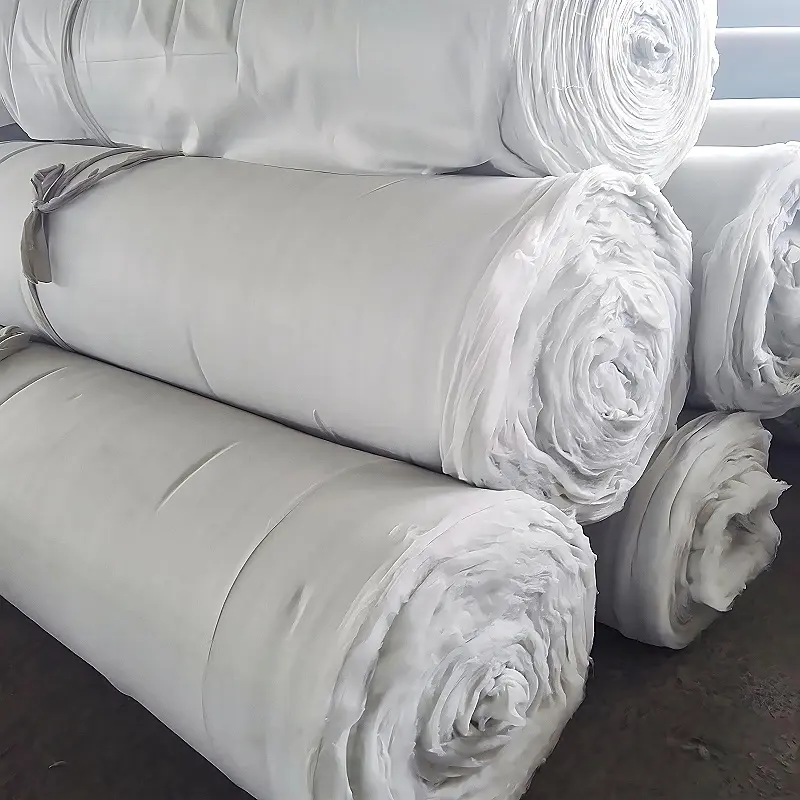
Geosynthetic materials Factory
Haoyang stands as a pioneering force in the realm of geosynthetic materials, with a steadfast commitment to innovation, quality, and sustainability. As the largest manufacturer of non-woven geotextile fabric in China, Haoyang boasts four dedicated production lines, each meticulously engineered to deliver superior performance and reliability. With a rich legacy of excellence spanning decades, Haoyang continues to redefine industry standards and spearhead advancements in geotechnical engineering worldwide.
State-of-the-Art Facilities:At the heart of Haoyang's operations lie its state-of-the-art manufacturing facilities, meticulously designed to optimize efficiency and precision. The company's four specialized production lines are equipped with cutting-edge technology and automated systems, enabling seamless integration of raw materials, precise control of process parameters, and consistent quality assurance throughout the manufacturing process.
Advanced Production Processes:Haoyang's production processes adhere to the highest industry standards, ensuring the production of non-woven geotextile fabric that meets or exceeds customer expectations. From fiber selection and web formation to bonding, finishing, and quality control, each step is meticulously executed with a focus on excellence and innovation. The company's commitment to continuous improvement drives ongoing research and development efforts, resulting in products that deliver exceptional performance and durability in the most demanding applications.
Product Range and Customization:Haoyang offers a comprehensive range of non-woven geotextile fabrics tailored to meet the diverse needs of civil engineering, construction, and environmental protection projects. Whether it's drainage systems, road construction, landfill liners, erosion control, retaining walls, or soil reinforcement, Haoyang's product portfolio caters to a wide spectrum of applications. Furthermore, the company's experienced team of engineers and technicians collaborates closely with customers to develop customized solutions that address specific project requirements, ensuring optimal performance and cost-effectiveness.
Commitment to Quality and Sustainability:Quality and sustainability are at the core of Haoyang's ethos, driving every aspect of its operations. The company maintains rigorous quality control measures at every stage of production, from raw material sourcing to final product inspection, to ensure consistency and reliability. Moreover, Haoyang is dedicated to minimizing its environmental footprint through responsible manufacturing practices, resource conservation, and eco-friendly initiatives, reaffirming its commitment to a greener, more sustainable future.
Global Reach and Customer Satisfaction:With a robust distribution network and a strong presence in both domestic and international markets, Haoyang continues to serve a diverse clientele of engineering firms, contractors, government agencies, and environmental organizations worldwide. The company's unwavering focus on customer satisfaction, coupled with its reputation for excellence and reliability, has earned Haoyang the trust and loyalty of customers across the globe.
Conclusion:In conclusion, Haoyang stands as a beacon of excellence in the manufacturing of non-woven geotextile fabric, setting the benchmark for quality, innovation, and sustainability in the industry. With its advanced facilities, cutting-edge technology, comprehensive product range, and unwavering commitment to customer satisfaction, Haoyang continues to lead the way in advancing geotechnical solutions and shaping the future of civil engineering and construction worldwide.
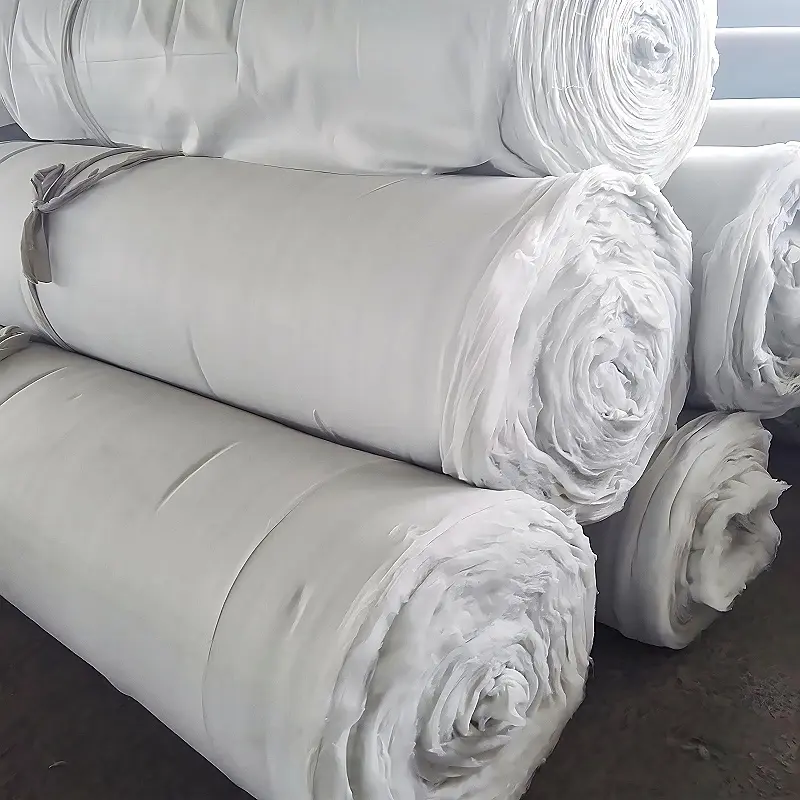
897.webp)
942.webp)
237.webp)